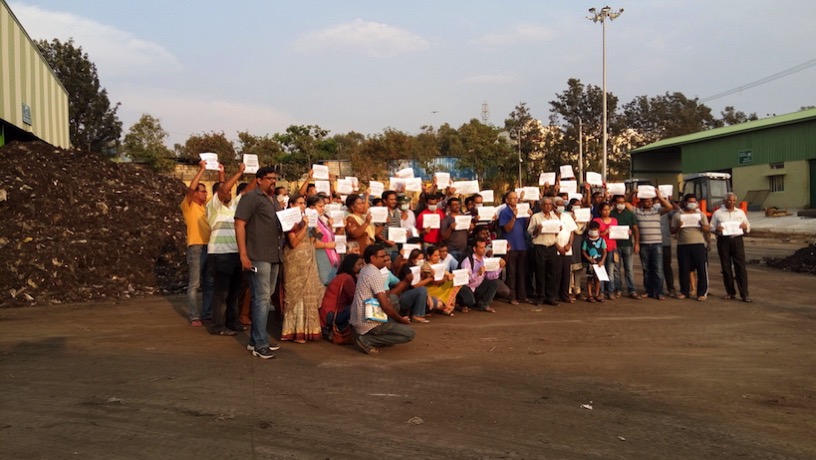We moved to our home in Mythri Maiden Apartment in 2009. Out of 28 housing units in the building, only 10 or 12 were occupied at that time. Very few owned cars. Most of the water requirements were met by the water that was pumped from an 800-feet deep bore-well. Water used to be pumped to the overhead tank and then brought down through pipes even for washing vehicles in the parking lot and for cleaning the common area. There was absolutely no regulation on water usage.
Within a year, the situation changed. The apartment was fully occupied. The water level in bore well started depleting. Electricity bill started increasing. During summer, we had to purchase water in tankers. These changes in-turn increased the maintenance charges. The discussions on increasing maintenance charges led to discussions on Rain Water Harvesting (RWH).
Few of us, who had lived in Chennai for several years before moving to Bengaluru, were familiar with the RWH concepts and the long-term benefits of RWH. As a first step,with support from all owners, we got an RWH audit done through a consultant. The audit report provided us more insights into how we can install the RWH system. We found that we could harvest almost 28,000 litres per hour if we get good rains.
Since several owners were skeptical on the Return of Investment (RoI), we decided to install a small RWH system which can be expanded later. A model with modular design that would include multiple small tanks instead of single large under ground tank model. The RWH filter was connected to the first tank. The overflow from this tank was allowed to flow to the second tank at a different level on the ground and the overflow from this tank was then diverted to the underground tank.

After the RWH system was installed, we instructed all owners and employees to use the water only from these RWH tanks for car washing or floor cleaning. This saved us around INR 3,000/- per month on the electricity bills. Within three months we got back the amount we invested in setting up the initial RWH system.

Many places where similar tanks were used, we had noticed a major issue. We get rains only for few days every year. The RWH tanks may lie idle during the remaining months resulting in the wall of the tanks turns brittle making the tank unusable. So we modified the pipelines to provide connections to these tanks from the bore well and from the underground water tank. Using multiple valves in the pipelines to the overhead tank, we diverted water to the RWH tanks. The RWH tanks are filled before filling the overhead tanks. By implementing this minor modification we saved water and power although the year. Storing water in these tanks during non-rainy season helped us prevent damage to the tank walls.

This year (2016) we further expanded the RWH system with four more filters covering all the outlets from the roof. All filters are connected to a single pipeline that is connected to the underground tank.

We are exploring more ways to enhance our RWH system.
Living in a small apartment with no space for large RWH tanks should not be an excuse for not implementing RWH systems. Explore the possibilities of modular designs and other creative ideas to save the water. Who knows… it may lead to new discoveries.




